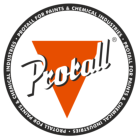

Paint is usually the passport to colour and perhaps the simplest, least costly and
most rapid approach to make-over a house. It could be as straightforward as
brilliant white, although that would exclude the range of other beautiful
colours. Ironically, it is the huge choice that usually presents a dilemma – you
can find so many brands, varieties and colours in the marketplace.
Select from traditional hues for period houses; smooth chalky coatings that
endure the rigours of todays modern life; or new formulas which are designed
to suit almost all surfaces. Just by understanding paint, you are able to unleash
the many design and style possibilities of paint that makes it an extraordinarily
attractive medium.
Types of Paint
Water-based paints are generally known as emulsions and were traditionally
applied for interior walls and ceilings. However in recent years, significant
advancements in paint technology means that water-based formulas,
particularly the high-performing acrylics, are designed for all surface types,
from metal to woodwork, as well as for interior and exterior use. The benefits
of emulsion paints compared to oil-based paints is that they are cleaner,
possess less odour and are also more environmentally friendly. Paint brushes
may be rinsed clean with water.
Solvent or oil-based paints are utilized in places where a tough, resilient finish
is essential for interior and exterior timber, masonry and furniture – despite the
fact that, as stated before, the new generation of acrylic paints and multi-
surface paints provides practical alternatives. As a rule, paint brushes should be
washed with turpentine or white spirit.
Metal Paint
This is certainly a cost-effective coating process which will quickly save metal
parts from any harm. Metal paint has the ability to dry rapidly therefore it may
be applied to surfaces by means of a brush or using a pump machine. However,
colours in the paint coating may become lighter – caused by exposure with
sunlight. This sort of paint coating may fragment easily. There may be a need to
re-paint those components that have been painted before and re-painting can
be performed should there be a necessity to maintain exterior appearance and
exposure to weather elements.
It is advisable to be aware of typical surface temperatures when choosing metal
paints for radiators, steam pipes, boilers, metal chimneys, etc. This
information pertains to the temperature a particular paint is able to withstand
without discolouring or deteriorating so it helps your paint supplier in
recommending the most suitable paint for the task.
Special heat resistant paints usually do not require primers, as primers may
break down at lower temperatures compared to the paint finishes themselves.
However, it is definitely important that the metal surface is completely clean
and dry prior to the paint being applied.
In summary, when selecting paints for specific purposes, their unique properties
have to be considered so as to maximise the effective use of the paint.
ADVICE
>
>
Essential Guide to Paint
ESSENSIAL GUIDE TO PAINT
>

© 2012 PROTALL.CO FOR PAINTS & CHEMICAL INDUSTRIES
Site Map

PROTALL PAINTS


Advice



















